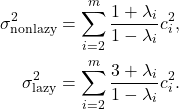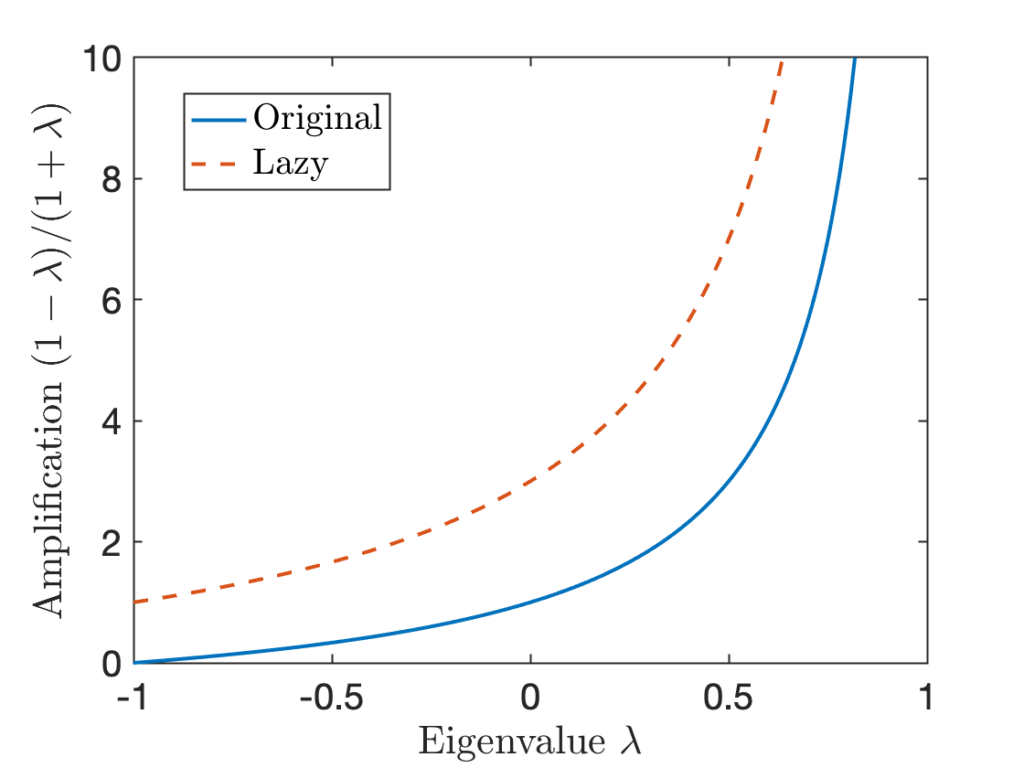I am delighted to share that my paper Embrace rejection: Kernel matrix approximation with randomly pivoted Cholesky has been released on arXiv, joint with Joel Tropp and Rob Webber.
On the occasion of this release, I want to talk about rejection sampling, one of the most powerful ideas in probabilistic computing. My goal is to provide an accessible and general introduction to this technique, with a more “applied math” rather than statistical perspective. I will conclude with some discussion of how we use it in our paper.
Motivating Application: Randomized Kaczmarz
Consider the task of solving a linear system of equations ![]() , where
, where ![]() is a matrix and
is a matrix and ![]() is a vector. For simplicity, we assume that this system is consistent (i.e., there exists a solution
is a vector. For simplicity, we assume that this system is consistent (i.e., there exists a solution ![]() such that
such that ![]() ). The randomized Kaczmarz algorithm is a mathematically elegant algorithm for solving this problem, due to Strohmer and Vershynin. Beginning with initial solution
). The randomized Kaczmarz algorithm is a mathematically elegant algorithm for solving this problem, due to Strohmer and Vershynin. Beginning with initial solution ![]() , randomized Kaczmarz repeatedly performs the following steps:
, randomized Kaczmarz repeatedly performs the following steps:
- Sample. Generate a random row index
 according to the probability distribution
according to the probability distribution  . Here, and going forward,
. Here, and going forward,  denotes the
denotes the  th row of
th row of  and
and  is the Frobenius norm.
is the Frobenius norm. - Update. Set
 .
.
Convergence theory of the randomized Kaczmarz iteration is very well-studied; see, e.g., section 4.1 of this survey for an introduction.
For this post, we will consider a more basic question: How can we perform the sampling step 1? If ![]() and
and ![]() are not very large, this is an easy problem: Simply sweep through all the rows
are not very large, this is an easy problem: Simply sweep through all the rows ![]() and compute their norms
and compute their norms ![]() . Then, sampling can be done using any algorithm for sampling from a weighted list of items. But what if
. Then, sampling can be done using any algorithm for sampling from a weighted list of items. But what if ![]() is very large? Suppose, even, that it is computationally expensive to read through the matrix, even once, to compute the row norms. What can we do now?
is very large? Suppose, even, that it is computationally expensive to read through the matrix, even once, to compute the row norms. What can we do now?
Here is one solution is using rejection sampling, due to Needell, Ward, and Srebro. Suppose that we know a bound on the row norms of ![]() :
:
(1) ![]()
- Propose. Draw a random row index
 uniformly at random (i.e.,
uniformly at random (i.e.,  is equally likely to be any row index between
is equally likely to be any row index between  and
and  .)
.) - Accept/reject. Make a random choice: With probability
 , accept and set
, accept and set  . With the remaining probability
. With the remaining probability  , reject and return to step 1.
, reject and return to step 1.
Why does this procedure work? As an intuitive explanation, notice that each row ![]() is equally likely to be proposed and has probability proportional to
is equally likely to be proposed and has probability proportional to ![]() of being accepted. Therefore, under this procedure, each row
of being accepted. Therefore, under this procedure, each row ![]() has probability proportional to
has probability proportional to ![]() of being selected, just as desired for randomized Kaczmarz. If this intuitive justification is unsatisfying, we’ll have a formal derivation of correctness below (in a more general context).
of being selected, just as desired for randomized Kaczmarz. If this intuitive justification is unsatisfying, we’ll have a formal derivation of correctness below (in a more general context).
I find rejection sampling to be super neat. In this case, it allows us to use simple ingredients (uniform row sampling and an upper bound on the row norms) to accomplish a more complicated task (sampling according to the squared row norms). We can sample from an interesting probability distribution (the squared row norm distribution) by thinning out samples from a simple distribution. This is a powerful idea that has many applications. (And, I believe, many more applications are waiting to be discovered.)
Rejection Sampling in General
Let’s now discuss rejection sampling in a bit more generality. Say I have a list of ![]() things each of which has a weight
things each of which has a weight ![]() . Our goal is to choose a random index
. Our goal is to choose a random index ![]() with probability proportional to
with probability proportional to ![]() , i.e.,
, i.e., ![]() . We will call
. We will call ![]() the target distribution. (Note that we do not require the weights
the target distribution. (Note that we do not require the weights ![]() to be normalized to satisfy
to be normalized to satisfy ![]() .)
.)
Suppose that sampling from the target distribution is challenging, but we can sample from a proposal distribution ![]() , i.e., we can efficiently generate random
, i.e., we can efficiently generate random ![]() such that
such that ![]() . Further, suppose that the proposal distribution dominates the target distribution in the sense that
. Further, suppose that the proposal distribution dominates the target distribution in the sense that
![]()
- Propose. Draw a random row index
 from the proposal distribution.
from the proposal distribution. - Accept/reject. Make a random choice: With probability
 , accept and set
, accept and set  . With the remaining probability
. With the remaining probability  , reject and return to step 1.
, reject and return to step 1.
We recognize the squared row-norm sampling above as an example of this general strategy with ![]() and
and ![]() for all
for all ![]() .
.
Let us now convince ourselves more carefully that rejection sampling works. On any given execution of the rejection sampling loop, the probability of proposing index ![]() is
is ![]() , after which the probability of accepting
, after which the probability of accepting ![]() is
is ![]() . Therefore, the probability of outputting
. Therefore, the probability of outputting ![]() at any given loop is
at any given loop is
![]()
![Rendered by QuickLaTeX.com \[\prob \{\text{any accepted this loop}\} = \sum_{i=1}^n \prob \{\text{$i$ accepted this loop}\} = \frac{\sum_{i=1}^n w_i}{\sum_{i=1}^n \rho_i}.\]](https://www.ethanepperly.com/wp-content/ql-cache/quicklatex.com-cb40d71ca9735132882dbcda9dc34464_l3.png)
![]()
As this analysis shows, the probability of accepting on any given execution of the rejection sampling loop is ![]() , the ratio of the total mass of the target
, the ratio of the total mass of the target ![]() to the total mass of the proposal
to the total mass of the proposal ![]() . Thus, rejection sampling will have a high acceptance rate if
. Thus, rejection sampling will have a high acceptance rate if ![]() and a low acceptance rate if
and a low acceptance rate if ![]() . The conclusion for practice is that rejection sampling is only computationally efficient if one has access to a good proposal distribution
. The conclusion for practice is that rejection sampling is only computationally efficient if one has access to a good proposal distribution ![]() , that is both easy to sample from and close to the target
, that is both easy to sample from and close to the target ![]() .
.
Here, we have presented rejection sampling as a strategy for sampling from a discrete set of items ![]() , but this not all that rejection sampling can do. Indeed, one can also use rejection sampling for sampling a real-valued parameters
, but this not all that rejection sampling can do. Indeed, one can also use rejection sampling for sampling a real-valued parameters ![]() or a multivariate parameter
or a multivariate parameter ![]() from a given (unnormalized) probability density function (or, if one likes, an unnormalized probability measure).
from a given (unnormalized) probability density function (or, if one likes, an unnormalized probability measure).
Before moving on, let us make one final observation. A very convenient thing about rejection sampling is that we only need the unnormalized probability weights ![]() and
and ![]() to implement the procedure, even though the total weights
to implement the procedure, even though the total weights ![]() and
and ![]() are necessary to define the sampling probabilities
are necessary to define the sampling probabilities ![]() and
and ![]() . This fact is necessary for many applications of rejection sampling. For instance, in the randomized Kaczmarz use, rejection sampling would be much less useful if we needed the total weight
. This fact is necessary for many applications of rejection sampling. For instance, in the randomized Kaczmarz use, rejection sampling would be much less useful if we needed the total weight ![]() , as computing
, as computing ![]() requires a full pass over the data to compute.
requires a full pass over the data to compute.
Application: Randomly pivoted Cholesky
Another application of rejection sampling appears is to accelerate the randomly pivoted Cholesky algorithm, the subject of my recent paper. Here, I’ll provide an overview of the main idea with a focus on the role of rejection sampling in the procedure. See the paper for more details. Warning: Even as simplified here, this section presents a significantly more involved application of rejection sampling than we saw previously with randomized Kaczmarz!
Randomly pivoted Cholesky (RPCholesky) is a simple, but powerful algorithm for computing a low-rank approximation to a symmetric positive semidefinite matrix ![]() , and it can be used to accelerate kernel machine learning algorithms.
, and it can be used to accelerate kernel machine learning algorithms.
Conceptually, RPCholesky works as follows. Let ![]() denote the initial matrix and
denote the initial matrix and ![]() denote a trivial initial approximation. For
denote a trivial initial approximation. For ![]() , RPCholesky performs the following steps:
, RPCholesky performs the following steps:
- Random sampling. Draw a random index
 with probability
with probability  .
. - Update approximation. Update
 . Here,
. Here,  denotes the
denotes the  th column of
th column of  .
. - Update matrix. Update
 .
.
The result of this procedure is a rank-![]() approximation
approximation ![]() . With an optimized implementation, RPCholesky requires only
. With an optimized implementation, RPCholesky requires only ![]() operations and evaluates just
operations and evaluates just ![]() entries of the input matrix
entries of the input matrix ![]() .
.
The standard RPCholesky algorithm is already fast, but there is room for improvement. The standard RPCholesky method processes the matrix ![]() one column
one column ![]() at a time, but modern computers are faster at processing blocks of columns. Using the power of rejection sampling, we can develop faster versions of RPCholesky that take advantage of blocked computations. These blocked implementations are important: While we could handle a million-by-million matrix using the standard RPCholesky method, blocked implementations can be up to 40
at a time, but modern computers are faster at processing blocks of columns. Using the power of rejection sampling, we can develop faster versions of RPCholesky that take advantage of blocked computations. These blocked implementations are important: While we could handle a million-by-million matrix using the standard RPCholesky method, blocked implementations can be up to 40![]() faster. In this post, I’ll describe the simplest way of using rejection sampling to implement RPCholesky.
faster. In this post, I’ll describe the simplest way of using rejection sampling to implement RPCholesky.
To set the stage, let’s first establish some notation and make a few observations. Let ![]() denote the first
denote the first ![]() selected random indices. With a little matrix algebra, one can show that the approximation
selected random indices. With a little matrix algebra, one can show that the approximation ![]() produced by
produced by ![]() steps of RPCholesky obeys the formula1For those interested, observe that
steps of RPCholesky obeys the formula1For those interested, observe that ![]() is an example of a Nyström approximation. The connection between Nyström approximation and Cholesky decomposition is explained in this previous post of mine.
is an example of a Nyström approximation. The connection between Nyström approximation and Cholesky decomposition is explained in this previous post of mine.
(1) ![]()
![]()
(2) ![]()
Here, we see a situation similar to randomized Kaczmarz. At each step of RPCholesky, we must sample a random index ![]() from a target distribution
from a target distribution ![]() , but it is expensive to evaluate all of the
, but it is expensive to evaluate all of the ![]() ‘s. This is a natural setting for rejection sampling. As proposal distribution, we may use the initial diagonal of
‘s. This is a natural setting for rejection sampling. As proposal distribution, we may use the initial diagonal of ![]() ,
, ![]() . (One may verify that, as required,
. (One may verify that, as required, ![]() for all
for all ![]() .) This leads to a rejection sampling implementation for RPCholesky:
.) This leads to a rejection sampling implementation for RPCholesky:
- Sample indices. For
 , sample random indices
, sample random indices  from the target distribution
from the target distribution  using rejection sampling with proposal distribution
using rejection sampling with proposal distribution  . Entries
. Entries  are evaluated on an as-needed basis using (2).
are evaluated on an as-needed basis using (2). - Build the approximation. Form the approximation
 all at once using (1).
all at once using (1).
By using rejection sampling, we have gone from an algorithm which handles the matrix one column at a time to a new algorithm which processes columns of the matrix ![]() all at once through the formula (1). In the right situations, this new algorithm can be significantly faster than the original RPCholesky method.2In its essence, this rejection sampling algorithm for RPCholesky was first proposed in this paper of mine, which uses rejection sampling to apply RPCholesky to infinite-dimensional positive definite kernel operators. The ability to handle infinite-dimensional sampling problems is another great strength of the rejection sampling approach.
all at once through the formula (1). In the right situations, this new algorithm can be significantly faster than the original RPCholesky method.2In its essence, this rejection sampling algorithm for RPCholesky was first proposed in this paper of mine, which uses rejection sampling to apply RPCholesky to infinite-dimensional positive definite kernel operators. The ability to handle infinite-dimensional sampling problems is another great strength of the rejection sampling approach.
We have now seen two extreme cases: the standard RPCholesky algorithm that processes the columns of ![]() one at a time and a rejection sampling implementation that operates on the columns of
one at a time and a rejection sampling implementation that operates on the columns of ![]() all at once. In practice, the fastest algorithm sits between these extremes, using rejection sampling to sample column indices in moderate-size blocks (say, between 100 and 1000 columns at a time). This “goldilocks” algorithm is the accelerated RPCholesky method that we introduce in our paper. Check it out for details!
all at once. In practice, the fastest algorithm sits between these extremes, using rejection sampling to sample column indices in moderate-size blocks (say, between 100 and 1000 columns at a time). This “goldilocks” algorithm is the accelerated RPCholesky method that we introduce in our paper. Check it out for details!
Conclusion: Rejection Sampling, an Algorithm Design Tool
We’ve now seen two applications, randomized Kaczmarz and randomly pivoted Cholesky, where rejection sampling can be used to speed up an algorithm. In both cases, we wanted to sample from a distribution over ![]() row or column indices, but it was expensive to perform a census to compute the probability weight of each item individually. Rejection sampling offers a different approach, where we generate samples from a cheap-to-sample proposal distribution and only evaluate the probability weights of the proposed items. In the right situations, this rejection sampling approach can lead to significant computational speedups.
row or column indices, but it was expensive to perform a census to compute the probability weight of each item individually. Rejection sampling offers a different approach, where we generate samples from a cheap-to-sample proposal distribution and only evaluate the probability weights of the proposed items. In the right situations, this rejection sampling approach can lead to significant computational speedups.
Rejection sampling has been used by statistics-oriented folks for decades, but the power of this technique seems less well-known to researchers in applied math, scientific computation, and related areas. I think there are a lot more exciting ways that we can use rejection sampling to design better, faster randomized algorithms.
![Rendered by QuickLaTeX.com \[\prob \{ |T_\varrho f(x)| \ge t \} \le \frac{\norm{T_\varrho f(x)}_{1+(p-1)/\varrho^2}^{1+(p-1)/\varrho^2}}{t^{1 + (p-1)/\varrho^2}} \le \frac{\norm{f(x)}_p^{1+(p-1)/\varrho^2}}{t^{1 + (p-1)/\varrho^2}}.\]](https://www.ethanepperly.com/wp-content/ql-cache/quicklatex.com-cce8fa7a0833532f245765fa1a9c8100_l3.png)
![Rendered by QuickLaTeX.com \begin{align*}T_\varrho f(x) &= \expect_{g_1,g_2 \sim \operatorname{Normal}(0,1)} \left[1+ (\varrho x_1 + \sqrt{1-\varrho^2}\cdot g_1)(\varrho x_2 + \sqrt{1-\varrho^2}\cdot g_2)\right].\\&= 1 + \expect[\varrho x_1 + \sqrt{1-\varrho^2}\cdot g_1]\expect[\varrho x_2 + \sqrt{1-\varrho^2}\cdot g_2]\\&= 1+ (\varrho x_1)(\varrho x_2) \\&= f(\varrho x).\end{align*}](https://www.ethanepperly.com/wp-content/ql-cache/quicklatex.com-af701855849196fbc6cc6b014e3a2956_l3.png)
![Rendered by QuickLaTeX.com \[\expect[(x_{i_1}\cdots x_{i_s}) \cdot (x_{i_1'}\cdots x_{i_s'})] = \begin{cases} 0 &\text{if } \{i_1,\ldots,i_s\} \ne \{i_1',\ldots,i_{s'}\}, \\1, & \text{otherwise}.\end{cases}\]](https://www.ethanepperly.com/wp-content/ql-cache/quicklatex.com-ffae6e30116eaf2f0ba6f2e59c16b3cc_l3.png)
![Rendered by QuickLaTeX.com \[\prob \{|x^\top A x| \ge t \} \le \exp\left(- \frac{t}{\sqrt{2}\mathrm{e}\norm{A}_{\rm F}} \right) \quad \text{for } t\ge \sqrt{2}\mathrm{e}\norm{A}_{\rm F}.\]](https://www.ethanepperly.com/wp-content/ql-cache/quicklatex.com-e3d852941995ea03ba8a5437dea4739d_l3.png)
![Rendered by QuickLaTeX.com \[\prob\{|x^\top Ax| \ge t\} \le 2\exp \left( -\frac{t^2}{4\norm{A}_{\rm F}^2+4\norm{A}t} \right).\]](https://www.ethanepperly.com/wp-content/ql-cache/quicklatex.com-74f8d582a44becc2445f4b52ac3eb4a3_l3.png)
![Rendered by QuickLaTeX.com \[\prob \{|x^\top A x| \ge t \} \le \frac{\norm{f(x)}_q^q}{t^q} \le \left( \frac{\sqrt{2}q\norm{A}_{\rm F}}{t} \right)^q\quad \text{for }q\ge 1.\]](https://www.ethanepperly.com/wp-content/ql-cache/quicklatex.com-0eaa8096b3cce3efcf8840738de249a4_l3.png)
![Rendered by QuickLaTeX.com \[\prob \{|x^\top A x| \ge t \} \le \exp\left(- \frac{t}{\sqrt{2}\norm{A}_{\rm F}} \alpha \ln \frac{1}{\alpha} \right) \quad \text{for } t\ge \frac{\sqrt{2}\norm{A}_{\rm F}}{\alpha}.\]](https://www.ethanepperly.com/wp-content/ql-cache/quicklatex.com-0676270f71519fd22e35fe8d378860ba_l3.png)

![Rendered by QuickLaTeX.com \[\norm{T_\varrho f(x)}_q = \sup_{\substack{\norm{g(x)} < +\infty \\ g\ge 0}} \frac{\expect[g(x) \cdot T_\varrho f(x)]}{\norm{g(x)}_{q'}}.\]](https://www.ethanepperly.com/wp-content/ql-cache/quicklatex.com-fb7781d624035221c888dcb755aa797e_l3.png)
![Rendered by QuickLaTeX.com \[\nabla^2 b(u,v) = u^{1/p}v^{1/q'}\cdot\begin{bmatrix} - \frac{1}{pp'} u^{-2} & \frac{1}{pq'} u^{-1}v^{-1} \\ \frac{1}{pq'} u^{-1}v^{-1} & - \frac{1}{qq'} v^{-2}\end{bmatrix}.\]](https://www.ethanepperly.com/wp-content/ql-cache/quicklatex.com-1e4e90d7081679b6e70c3d15c433f32d_l3.png)
![Rendered by QuickLaTeX.com \[\nabla^2 b(u,v)\circ \twobytwo{1}{\varrho}{\varrho}{1}= u^{1/p}v^{1/q'}\cdot\begin{bmatrix} - \frac{1}{pp'} u^{-2} & \frac{\varrho}{pq'} u^{-1}v^{-1} \\ \frac{\varrho}{pq'} u^{-1}v^{-1} & - \frac{1}{qq'} v^{-2}\end{bmatrix}\]](https://www.ethanepperly.com/wp-content/ql-cache/quicklatex.com-6a0103067b2861534c02b41257561c60_l3.png)
![Rendered by QuickLaTeX.com \[\nabla^2 b(u,v)\circ \twobytwo{1}{\varrho}{\varrho}{1}= u^{1/p}v^{1/q'}\cdot B^\top\begin{bmatrix} - \frac{p}{p'} & \varrho \\ \varrho & - \frac{q'}{q} \end{bmatrix}B \quad \text{for } B = \operatorname{diag}(p^{-1}u^{-1},(q')^{-1}v^{-1}).\]](https://www.ethanepperly.com/wp-content/ql-cache/quicklatex.com-133058d7adc70a8cbc73237908ead12d_l3.png)
![Rendered by QuickLaTeX.com \[H = \begin{bmatrix} - \frac{p}{p'} & \varrho \\ \varrho & - \frac{q'}{q} \end{bmatrix} \quad \text{is negative semidefinite}.\]](https://www.ethanepperly.com/wp-content/ql-cache/quicklatex.com-e76306c9c94205e495a55477fa2f0359_l3.png)
![Rendered by QuickLaTeX.com \[\expect\left[\frac{|\hat{\tr}-\tr(A)|}{\tr(A)}\right] \le \varepsilon \quad \text{using } m= \frac{\rm const}{\varepsilon^2} \text{ matvecs}.\]](https://www.ethanepperly.com/wp-content/ql-cache/quicklatex.com-f5fb46e94d7eb16388f9b64b89b55695_l3.png)
![Rendered by QuickLaTeX.com \[\expect\left[\frac{|\hat{\tr}-\tr(A)|}{\tr(A)}\right] \le \varepsilon \quad \text{using } m= \frac{\rm const}{\varepsilon} \text{ matvecs}.\]](https://www.ethanepperly.com/wp-content/ql-cache/quicklatex.com-f02329ffe8815d7accd7cdc6b6d98288_l3.png)
![Rendered by QuickLaTeX.com \[\expect\left[\frac{|\hat{\tr}-\tr(A)|}{\tr(A)}\right] \le \varepsilon \quad \text{using } m= \frac{\rm const}{\varepsilon^{0.999}} \text{ matvecs}?\]](https://www.ethanepperly.com/wp-content/ql-cache/quicklatex.com-db093bc2c65d7a41027f2a3ea2ed0b8e_l3.png)
![Rendered by QuickLaTeX.com \[\expect\left[\frac{|\hat{\tr}-\tr(A)|}{\tr(A)}\right] \le \varepsilon \quad \text{using } m= \frac{\rm const}{\varepsilon^{0.999}} \text{ matvecs}.\]](https://www.ethanepperly.com/wp-content/ql-cache/quicklatex.com-9a779882022766ae2b0dbd26f61820b4_l3.png)
![Rendered by QuickLaTeX.com \[\expect\left[\frac{|\hat{\tr}-\tr(A)|}{\tr(A)}\right] \le \varepsilon.\]](https://www.ethanepperly.com/wp-content/ql-cache/quicklatex.com-6916e3d69eb2e3156b0dca29cc675119_l3.png)
![Rendered by QuickLaTeX.com \[\left| \frac{\hat{\tr} - \tr(A)}{\tr(A)} \right| \le \frac{1}{\sqrt{n}},\]](https://www.ethanepperly.com/wp-content/ql-cache/quicklatex.com-047558693bcc30d440d0946612c51d11_l3.png)
![Rendered by QuickLaTeX.com \[\text{If } m < \frac{cn}{T} = \Theta\left( \frac{\sqrt{n}}{b+\log n} \right), \quad \text{then } \left| \frac{\hat{\tr} - \tr(A)}{\tr(A)} \right| > \frac{1}{\sqrt{n}} \text{ with probability at least } \frac{1}{3}.\]](https://www.ethanepperly.com/wp-content/ql-cache/quicklatex.com-5bfe46d9b0837c94540ec3beb61f54d9_l3.png)
![Rendered by QuickLaTeX.com \[\text{If }\left| \frac{\hat{\tr} - \tr(A)}{\tr(A)} \right| \le \frac{1}{\sqrt{n}}\text{ with probability at least } \frac{2}{3}, \quad \text{then } m \ge \Theta\left( \frac{\sqrt{n}}{b+\log n} \right).\]](https://www.ethanepperly.com/wp-content/ql-cache/quicklatex.com-63477ee2387425ede19c2c39833bb2db_l3.png)
![Rendered by QuickLaTeX.com \[\left| \frac{\hat{\tr} - \tr(A)}{\tr(A)} \right| \le \frac{1}{\sqrt{n}} \quad \text{with probability at least }\frac{2}{3}.\]](https://www.ethanepperly.com/wp-content/ql-cache/quicklatex.com-bf9214804f204aebae161f5f99a2accb_l3.png)
![Rendered by QuickLaTeX.com \[\sum_{j=1}^n k(s_i,s_j)w^\star_j = \int_\Omega k(s_i,x) g(x)\,\mathrm{d}\mu(x) \quad \text{for }i=1,2,\ldots,n.\]](https://www.ethanepperly.com/wp-content/ql-cache/quicklatex.com-2ca2ce892f9d441ad8a17abcf969ca8c_l3.png)
![Rendered by QuickLaTeX.com \[w\in\Delta\coloneqq \left\{ p\in\real^n_+ : \sum_{i=1}^n p_i = 1\right\}.\]](https://www.ethanepperly.com/wp-content/ql-cache/quicklatex.com-d5f5e9e0975c0a82bcfd5c08c75653d5_l3.png)
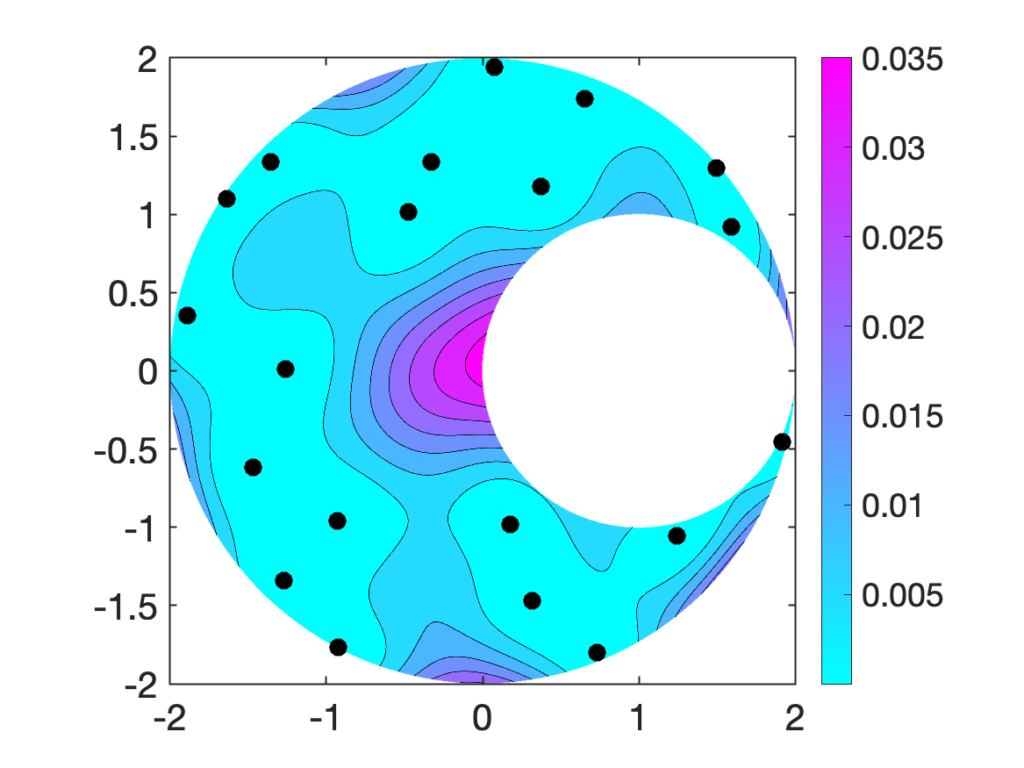
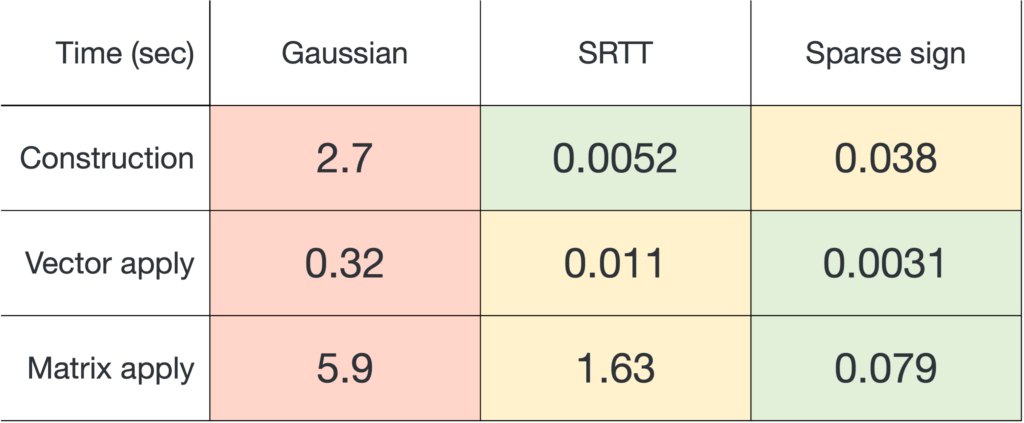
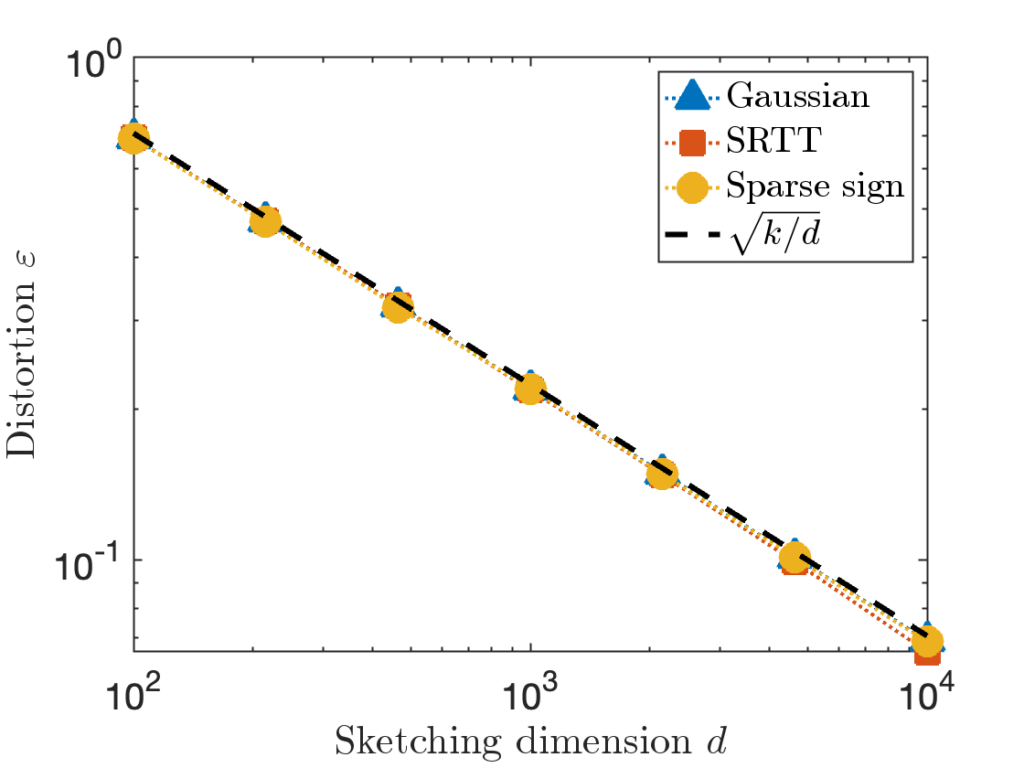
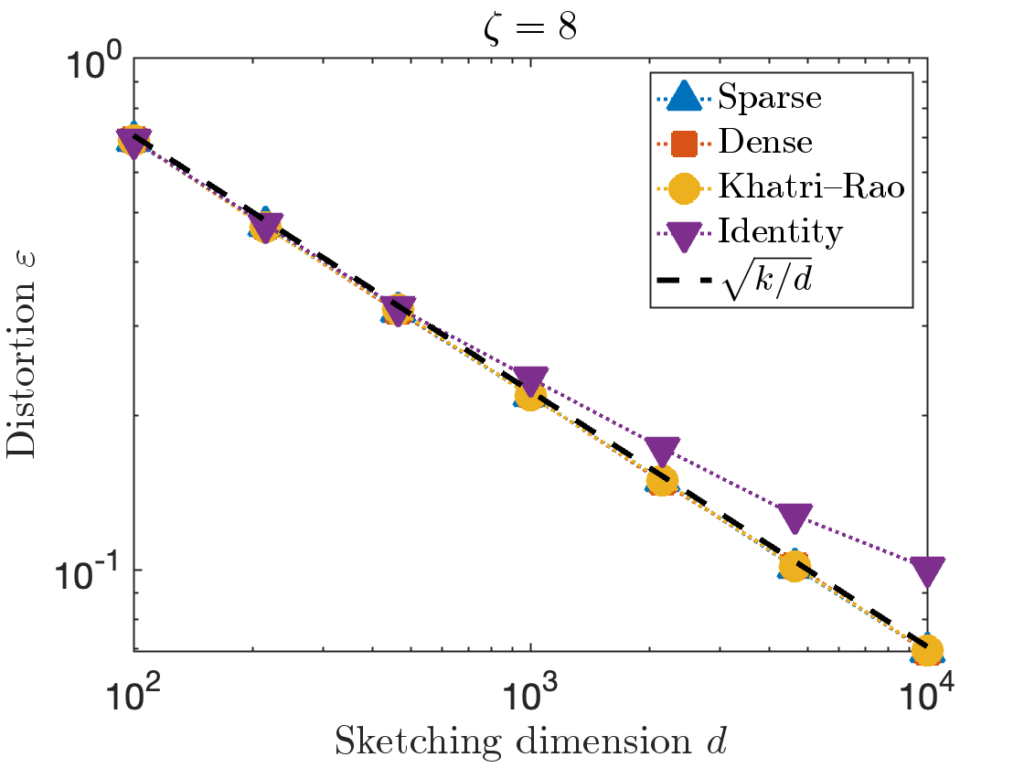
![Rendered by QuickLaTeX.com \[\zeta = \max \left( 8 , \left\lceil 2\sqrt{\frac{d}{k}} \right\rceil \right).\]](https://www.ethanepperly.com/wp-content/ql-cache/quicklatex.com-b28b75e96d6b15a5d9985b8aa381d897_l3.png)
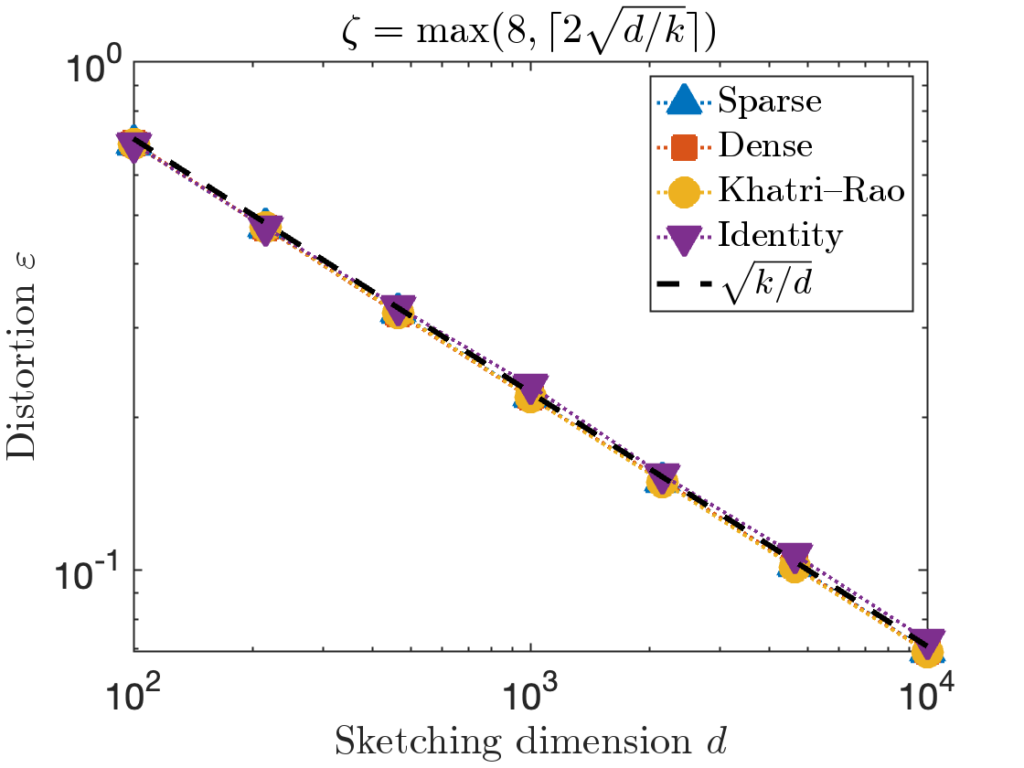
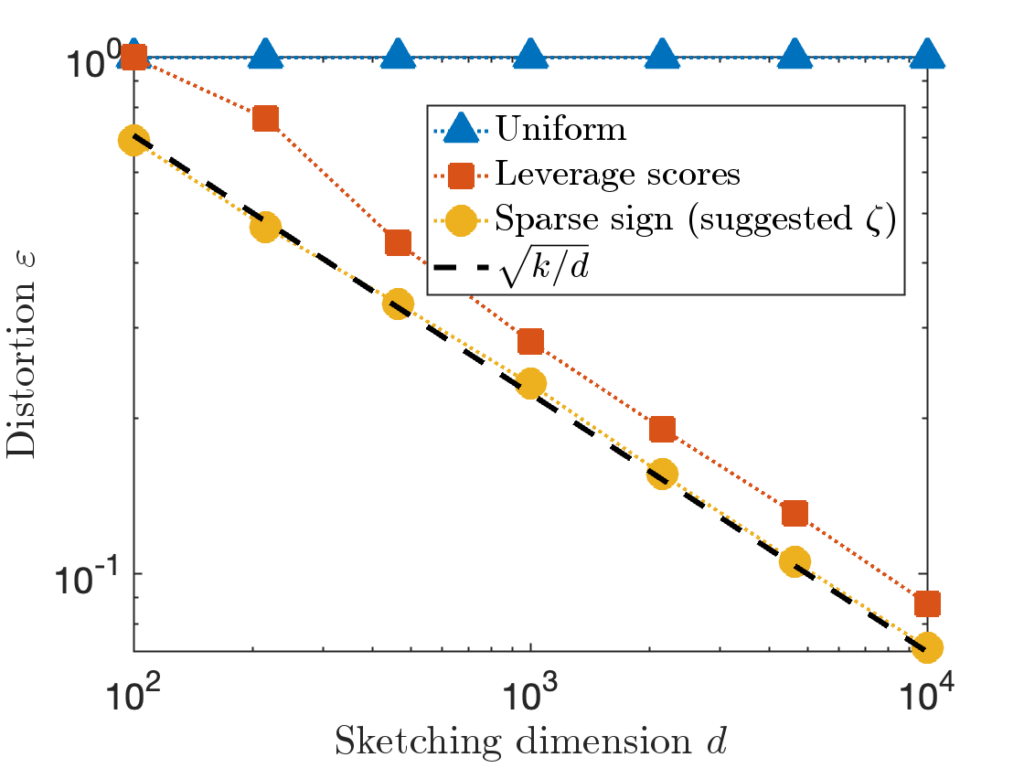
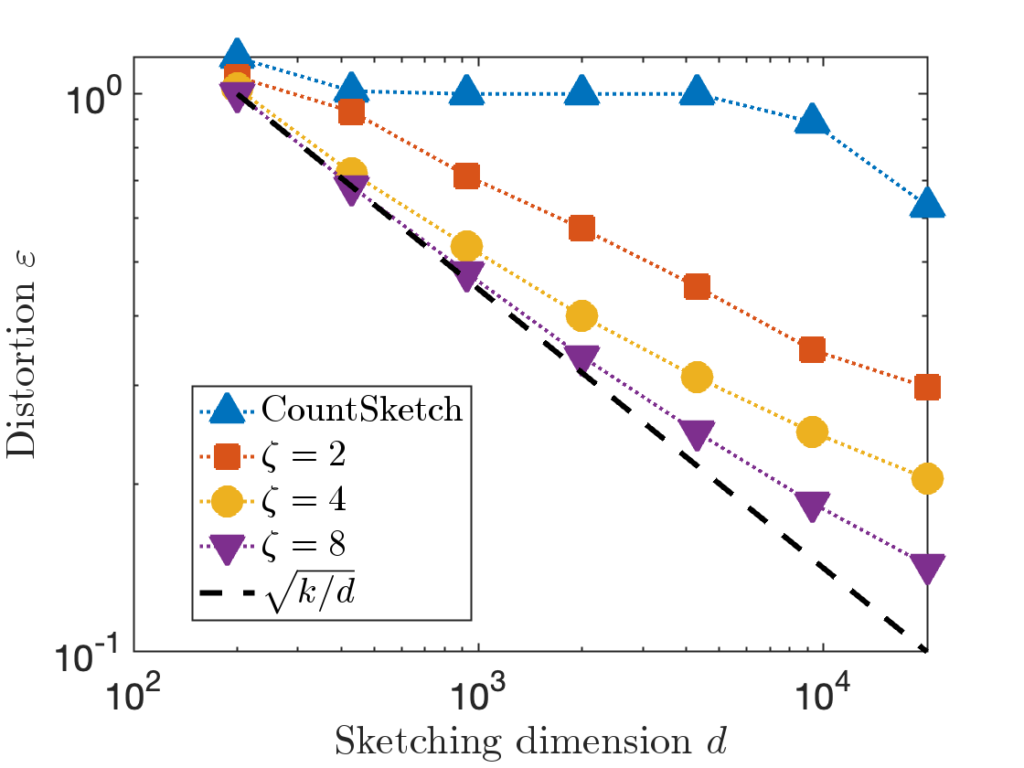
![Rendered by QuickLaTeX.com \[\prob \{ j_1,\ldots,j_k \text{ are distinct} \} = \prod_{i=1}^k \left(1 - \frac{i-1}{d} \right).\]](https://www.ethanepperly.com/wp-content/ql-cache/quicklatex.com-274b188c4b1ef4289d715a6d71fec699_l3.png)
![Rendered by QuickLaTeX.com \[\mathbb{P} \{ j_1,\ldots,j_k \text{ are distinct} \} \le \prod_{i=0}^{k-1} \exp\left(-\frac{i}{d}\right) = \exp \left( -\frac{1}{d}\sum_{i=0}^{k-1} i \right) = \exp\left(-\frac{k(k-1)}{2d}\right).\]](https://www.ethanepperly.com/wp-content/ql-cache/quicklatex.com-0d94f2c4c08982b42bf291b534e5a0f9_l3.png)
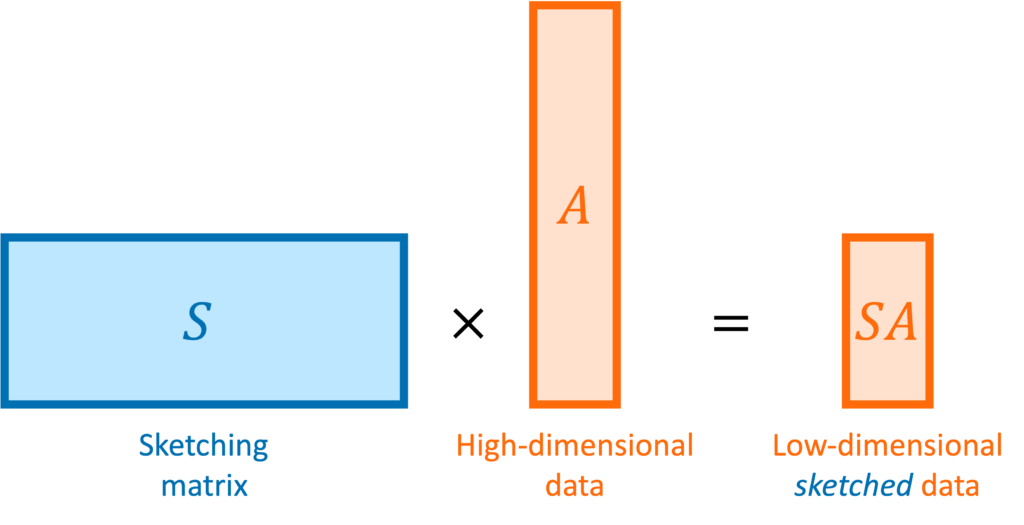
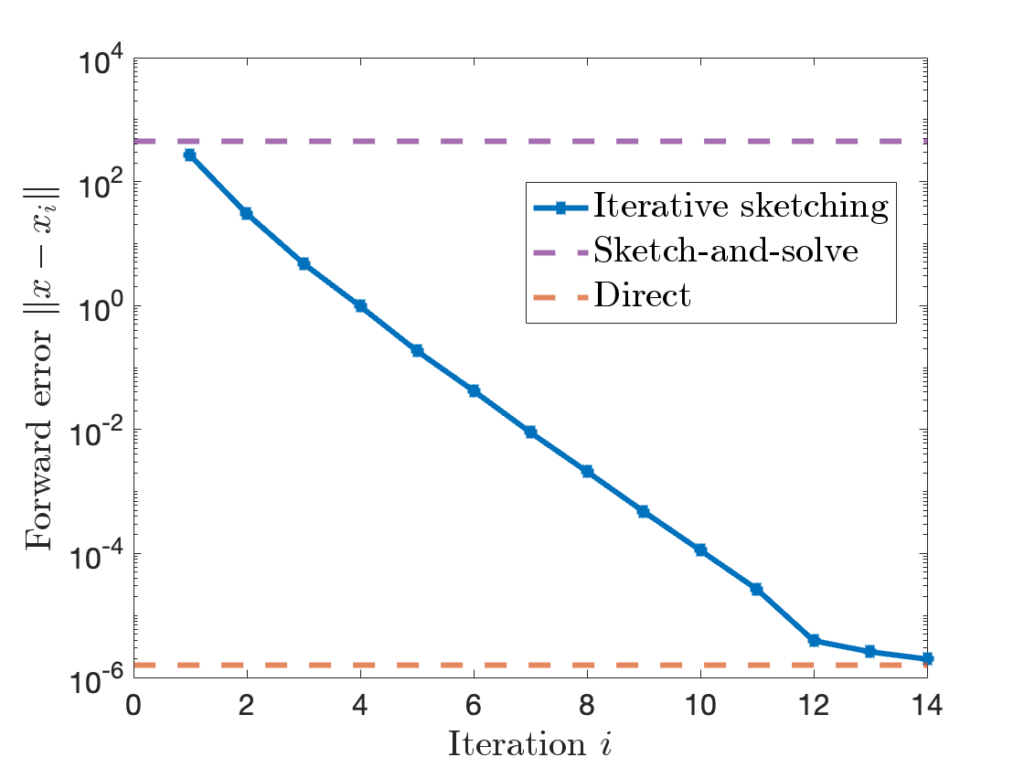
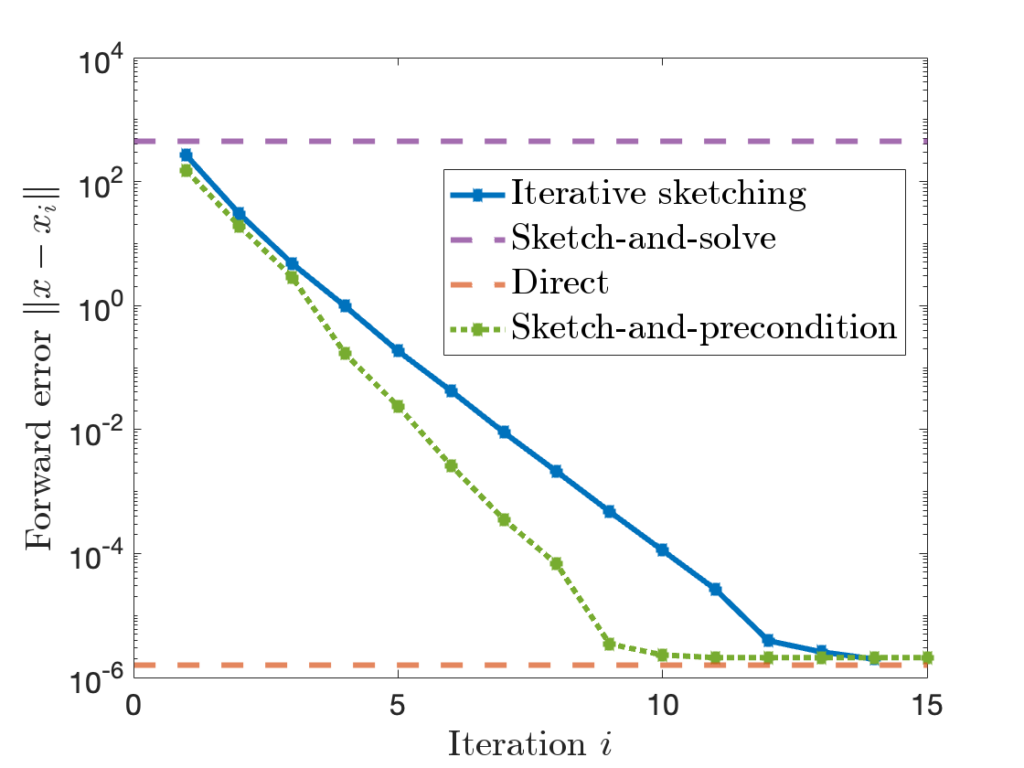
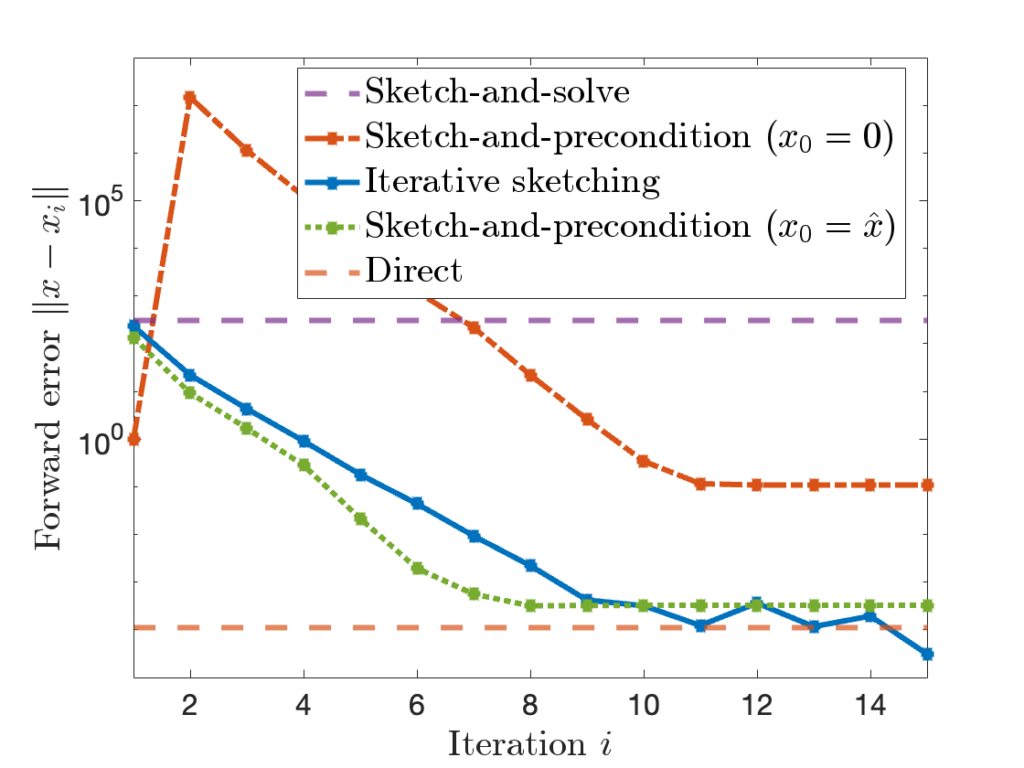
![Rendered by QuickLaTeX.com \[\hat{f}_{N}\coloneqq \frac{1}{N}\sum_{n=0}^{N-1} f(x_i).\]](https://www.ethanepperly.com/wp-content/ql-cache/quicklatex.com-d3abc4798f0fa92356238c58537699ee_l3.png)
![Rendered by QuickLaTeX.com \[\hat{f}_N = \frac{1}{N}\sum_{n=0}^{N-1} f(x_i)\]](https://www.ethanepperly.com/wp-content/ql-cache/quicklatex.com-35bea8cb17a1bbf5901d464df8d8af9f_l3.png)
![Rendered by QuickLaTeX.com \[\langle \varphi_i,\varphi_j \rangle = \expect_{x\sim \pi} [\varphi_i(x)\varphi_j(x)] = \begin{cases}1, & i = j, \\0, & i \ne j.\end{cases}\]](https://www.ethanepperly.com/wp-content/ql-cache/quicklatex.com-5b0557d6e679ed9a7a55768fbb0056ea_l3.png)
![Rendered by QuickLaTeX.com \begin{align*}\expect[f(x_0)f(x_n)] &= \sum_{i=1}^m \expect[f(x_0) f(x_n) \mid x_0 = i] \prob\{x_0 = i\} \\&= \sum_{i=1}^m f(i) \expect[f(x_n) \mid x_0 = i] \pi_i.\end{align*}](https://www.ethanepperly.com/wp-content/ql-cache/quicklatex.com-013a17b0d26f00edaf30d12b3d16384c_l3.png)
![Rendered by QuickLaTeX.com \[\expect[f(x_0)f(x_n)] = \left\langle \sum_{i=1}^m c_i \varphi_i,\sum_{i=1}^m c_i P^n\varphi_i \right\rangle = \left\langle \sum_{i=1}^m c_i \varphi_i,\sum_{i=1}^m c_i \lambda_i^n \varphi_i \right\rangle = \sum_{i=1}^m \lambda_i^n \, c_i^2.\]](https://www.ethanepperly.com/wp-content/ql-cache/quicklatex.com-1b21004630647911cbda5b4ea80a52a1_l3.png)
![Rendered by QuickLaTeX.com \begin{align*}\sigma^2 &= \Var[f(x_0)] + 2\sum_{n=1}^\infty \Cov(f(x_0),f(x_n)) \\&= \sum_{i=2}^m c_i^2 + 2\sum_{n=1}^\infty \sum_{i=2}^m \lambda_i^n \, c_i^2 \\&= -\sum_{i=2}^m c_i^2 + 2\sum_{i=2}^m \left(\sum_{n=0}^\infty \lambda_i^n\right)c_i^2 .\end{align*}](https://www.ethanepperly.com/wp-content/ql-cache/quicklatex.com-0d27501c707dab9d3907b1aaf3b5d6fd_l3.png)
![Rendered by QuickLaTeX.com \[\sigma^2 = -\sum_{i=2}^m c_i^2 + 2\sum_{i=2}^m \frac{1}{1-\lambda_i} c_i^2 = \sum_{i=2}^m \left(\frac{2}{1-\lambda_i}-1\right)c_i^2 = \sum_{i=2}^m \frac{1+\lambda_i}{1-\lambda_i} c_i^2. \]](https://www.ethanepperly.com/wp-content/ql-cache/quicklatex.com-a4c2db58ce13ec71eb8b021a911dfcf2_l3.png)
![Rendered by QuickLaTeX.com \[\hat{f}_N = \frac{1}{N} \sum_{i=0}^{N-1} f(x_n)\]](https://www.ethanepperly.com/wp-content/ql-cache/quicklatex.com-3b18dba9948ca0bc5101f96f00663218_l3.png)
